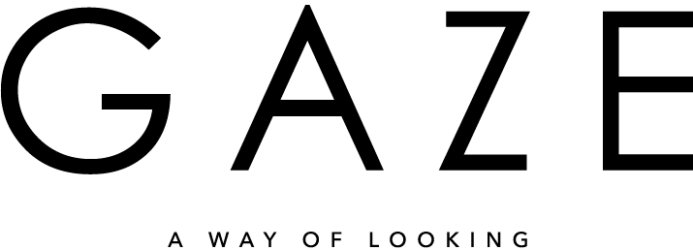Por Sheilla Cohen.
Después de mostrar por primera vez en Zona Maco su proyecto en curso “When our Pineal Glands were Big”, una historia única de creación extraída de textos imaginarios de la antigüedad, como el Enuma Elis, la Biblia, el Popol Vuh, el Nommo, las historias de Lakota y otros mitos de la creación. Zhivago Duncan (1980) los entreteje todos creando otros mundos a través de una narrativa visual compuesta por una serie de pinturas y esculturas a gran escala que crean una experiencia inmersiva que el espectador no podrá olvidar.
El artista multidisciplinario explora estas teorías mitológicas creando narrativas visuales, utilizando el batik como su medio, una técnica ancestral que consiste en teñir con cera de colores las telas para elaborar diseños y patrones.

Zhivago Duncan, Inter Molecular force, 2020.
Batik sobre lienzo
Cortesía: Zhivago Duncan
Fotógrafo: Víctor Mendoza
Sus monumentales lienzos representan mundos imaginarios que podrían ser vistas microscópicas o universos gigantes donde los significados geométricos están interconectados y la arquitectura tiene valores filosóficos que se convierten en un sueño surrealista metafísico.
Describe cómo es tu proceso creativo
La rutina es mi todo. Necesito orden en mi vida para crear realidades complejas
en mi trabajo.
¿Por qué decidiste mudarte a la Ciudad de México?
Destino…
Esta es tu primera exposición individual en Zona Maco. ¿Cómo te sientes al tener tu propio y poder mostrar tu trabajo en una de las ferias de arte más importantes de la Ciudad de México?
Lo que siento no es relevante … Los artistas son agentes con absoluta libertad de pensamiento. Somos magos, neutrales al sueño de la civilización. Lo aislamos, lo reapropiamos y lo manipulamos creando alternativas posibilidades, mundos, situaciones, conceptos, etc.
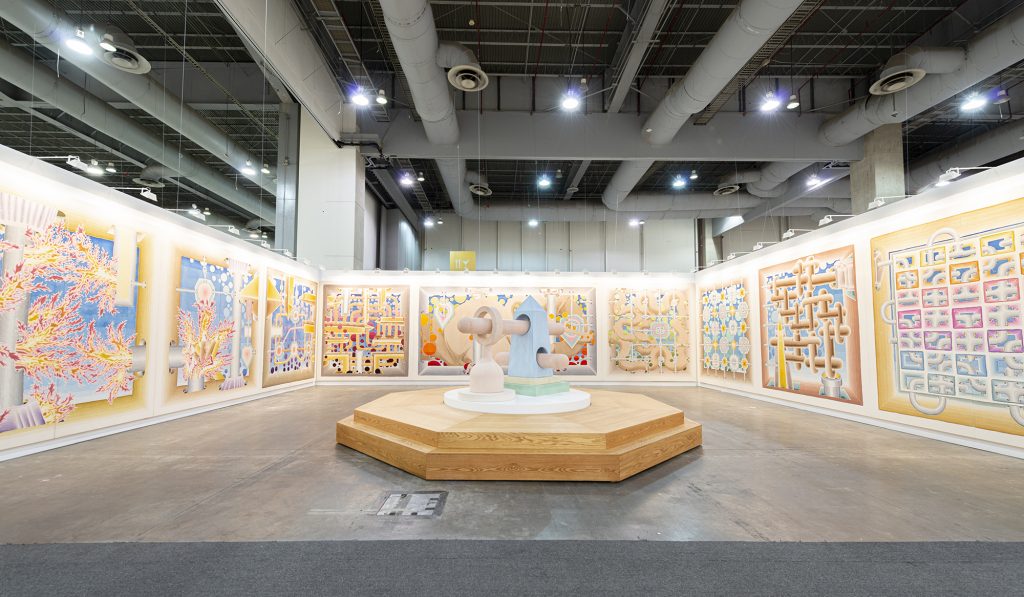
Vista del booth E120, ZONA MACO, 2020.
Cortesía: Zhivago Duncan
Fotógrafo: Víctor Mendoza
Utilizas una técnica muy antigua para tus pinturas. ¿Me puede explicar qué es el batik?
Batik es una forma antigua de teñir imágenes en la tela. Tiene una calidad muy singular. En lienzo tiene una textura casi aterciopelada.
¿Por qué empezaste a nombrar los jarrones de cera de color?
Lo hice para mí, es una forma sencilla de recordar los colores que mezclo. Nombro los colores como la primera imagen que me viene a la mente cuando veo el color.
¿Por qué este medio se ha convertido en tu lenguaje estético característico?
Era mi medio antes de que lo supiera, es casi como si me estuviera esperando durante veinte años.

Primorial Soup, 2019 – 2020.
Batik sobre lienzo
Cortesía: Zhivago Duncan
Fotógrafo: Víctor Mendoza
¿Cómo encontraste tu voz interior como artista?
Grité en la cima de un volcán cuando tenía siete años cuando vivíamos en Hawai y en la ráfaga de viento que siguió a mi grito, una voz en el aire me susurró algo al oído.
¿Te inspiraste en el personaje de la película clásica Dr. Zhivago para utilizar tu nombre artístico?
No me nombre como el personaje de la película. Mi madre estaba leyendo la novela cuando estaba embarazada de mí y, a falta de un nombre mejor, ella y mi padre decidieron llamarme Zhivago. Quiero decir, ¿quién en su sano juicio se cambia su nombre a Zhivago?
¿Cuál es el concepto detrás de «Cuando nuestras glándulas pineales eran grandes»?
La historia de la creación y la comprensión de dónde venimos.
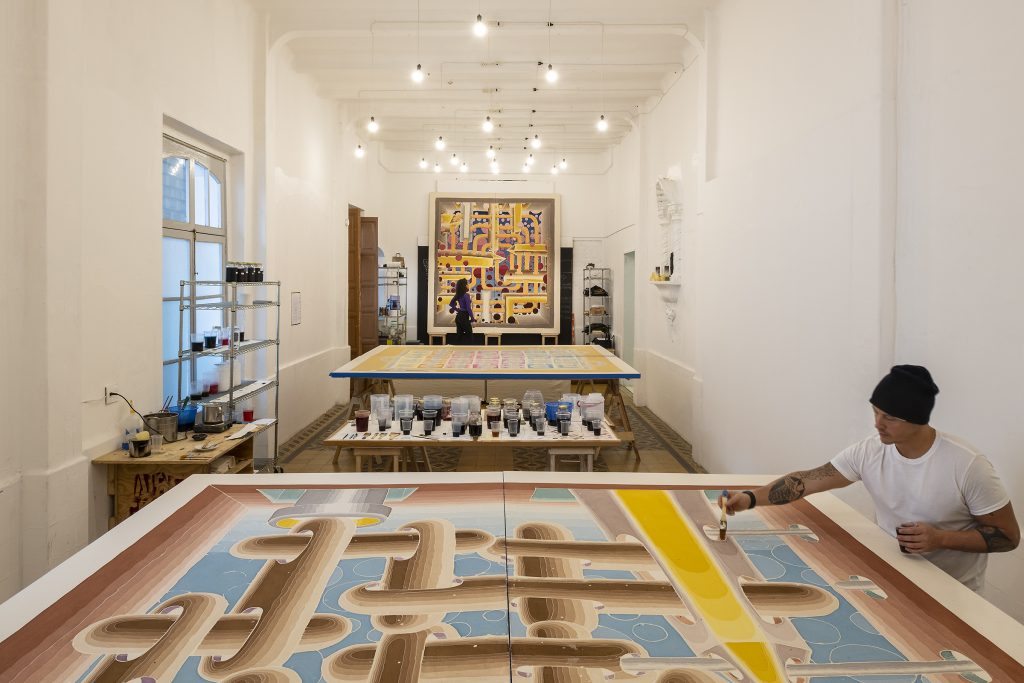
Cortesía: Zhivago Duncan
Fotógrafo: Amanda Holmes
¿Cómo se relaciona tu proceso evolutivo interno con tu obra?
Mi trabajo es una fuente visual basada en la información que tomo en el proceso. Es algo que por sí solo.
¿Qué transformación atravesaste en tu camino espiritual para crear este proyecto?
No fue una transformación espiritual… Es más como apegarte a tus instintos espirituales. Todos tenemos esas herramientas como niños, se trata de nutrir y mantener esa esencia a medida que creces y estás cada vez más expuesto a las muros rígidas de la sociedad adulta.
¿Qué significa el titulo de este proyecto?
Antiguamente teníamos enormes glándulas pineales y éramos seres increíblemente conscientes, es parte de nuestra historia.
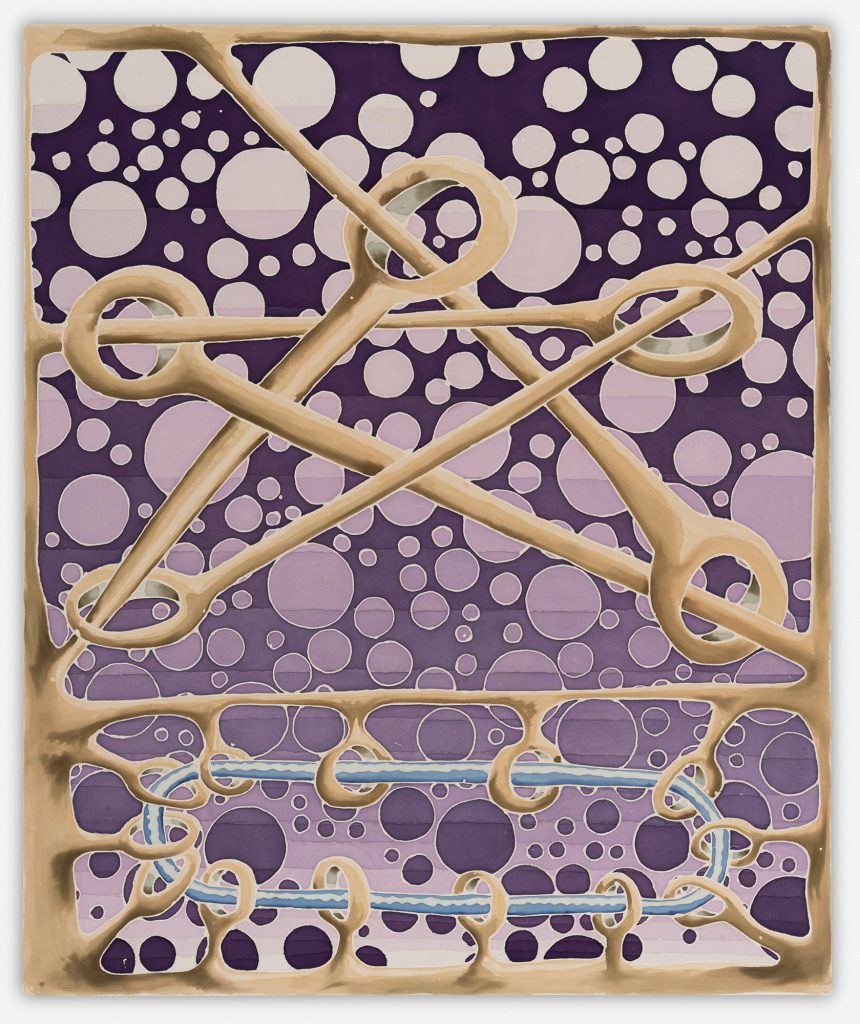
Batik sobre lienzo
Cortesía: Zhivago Duncan
Fotógrafo: Víctor Mendoza
¿Cuándo comenzaste a trabajar en este proyecto en curso?
Desde hace dos años.
¿Esto significa que hay más por venir?
100%
La serie cuenta una historia única sobre la creación extraída de imaginarios de textos antiguos. ¿Cuáles fueron las referencias que tomó para conectar y construir esta narrativa visual?
Básicamente, los cuatro pilares de investigación en mi trabajo son:
• Los antiguos mitos de la creación.
• Sustancias psicotrópica y neurociencia.
• Hallazgos geológicos que han sido reelegados por las sociedades geológicas.
• Mitos y preguntas sin respuesta.
Después de hacer esta investigación. ¿Cuál crees que es el propósito del mito en nuestra sociedad?
El mito no tiene ningún propósito. El mito es solo nuestra forma de llegar a una conclusión sobre cosas que no podemos explicar con la razón.
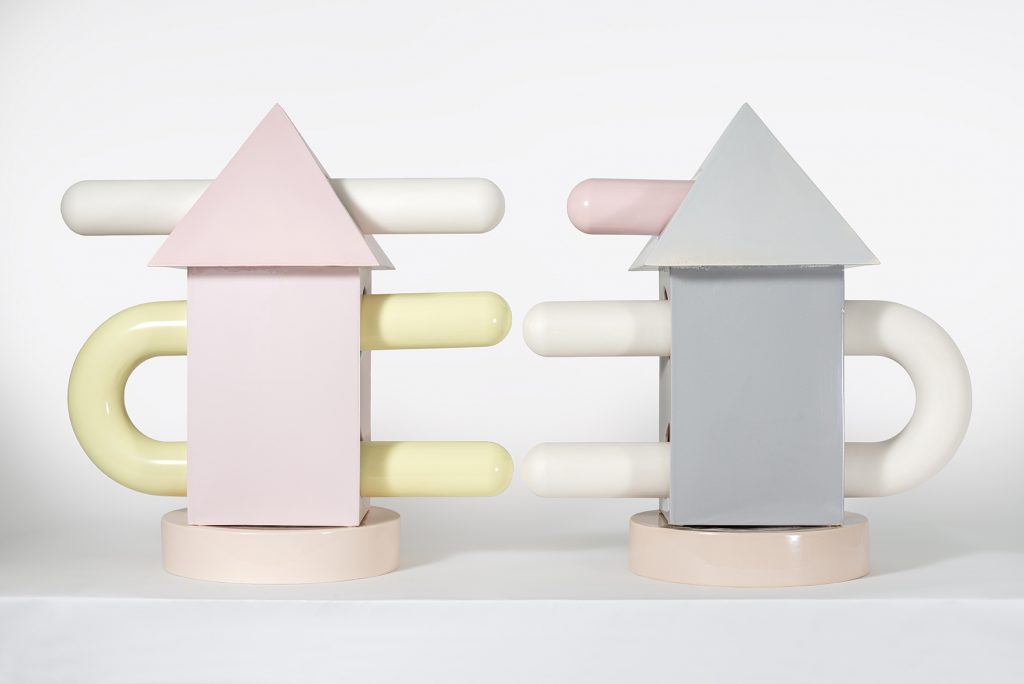
Tu cuerpo de obra es una representación de la conectividad que da origen a una línea de estructura humana mitológica que se cruza con historias de dioses y la naturaleza de un mundo una vez armonioso. ¿Qué sucede con esta forma avanzada de comunicación entre la humanidad y la naturaleza?
Nuestras glándulas pineales se encogieron.
Las pinturas y esculturas a gran escala crean una experiencia inmersiva que el espectador no podrá olvidar. ¿Entrar en este sueño surrealista metafísico es como estar en tu mente?
Supongo. No estoy seguro de cómo estar en mi mente es diferente a nada, ya que siempre estoy en mi mente.
¿Vas a seguir trabajando en esta serie o planeas hacer otra cosa?
Esto solo es el comienzo.
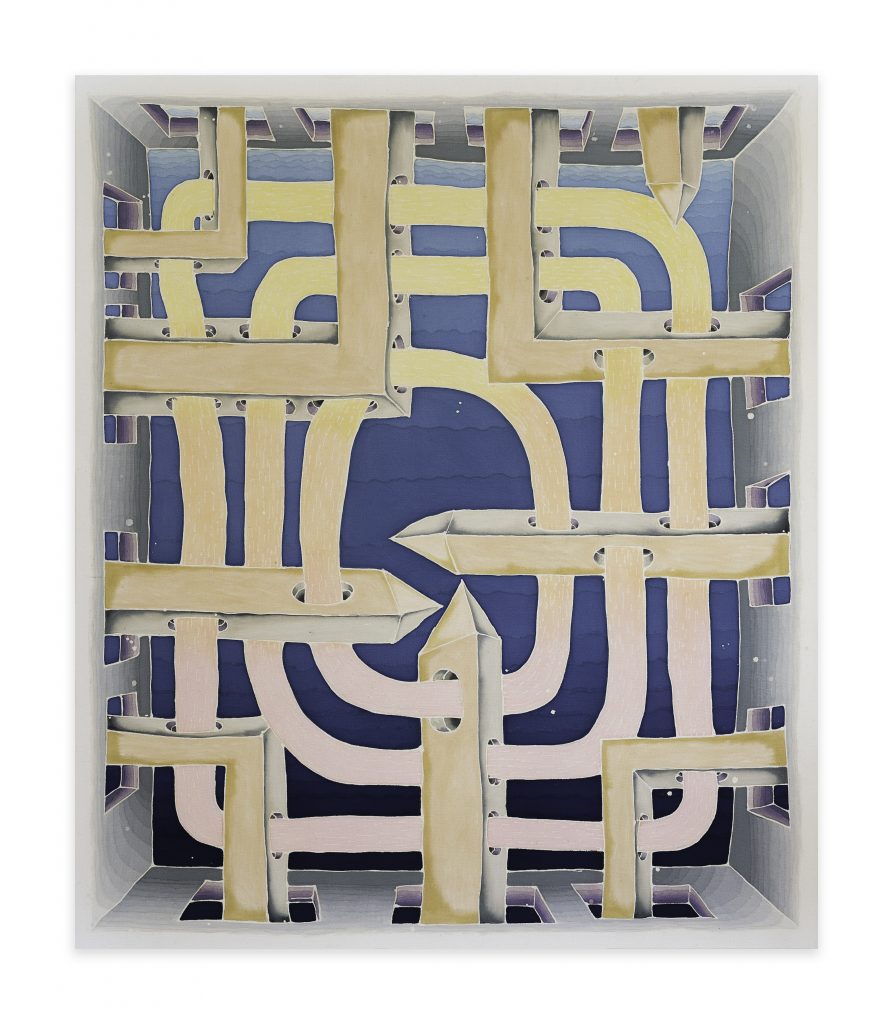
Batik sobre lienzo
Cortesía: Zhivago Duncan
Fotógrafo: Víctor Mendoza
P. www. zhivagoduncan.com
@zhivagoduncan
______________________________________________________________________________
Zhivago Duncan: a surreal imaginary dream of creation
By Sheilla Cohen.
After showing for the first time at Zona Maco his on going project “When our Pineal Glands were Big” a unique story of creation drawn from imaginary of ancient texts such as the Enuma Elis, Bible, the Popol Vuh, the Nommo, Lakota stories and other myths of creation. Zhivago Duncan (1980) connects them all together by creating other worlds through his visual narrative comprised by a series of large-scale paintings and sculptures that create all together an immersive experience the viewer won’t be able to forget.

Courtesy: Zhivago Duncan
Photographer: Amanda Holmes
The multimedia artist explores these mythological theories through in his visual narratives using batik as his medium, an ancestral technique that consist on tie dying fabrics with color wax to elaborate patterns and designs. His monumental canvases depict imaginary worlds which could be microscopic views or gigantic universes where geometric meanings are inter-connected and architecture holds philosophical values turning into a metaphysical surreal dream.
How would you describe your creative process?
Routine is my everything. I need order in my life to create the complex realities in my work.
Why did you decided to move to Mexico City?
Destiny…
This is your first solo-exhibition at Zona Maco. ¿How do you feel about having a both of your own and being able to show your work in one of the most important art fairs in Mexico City?
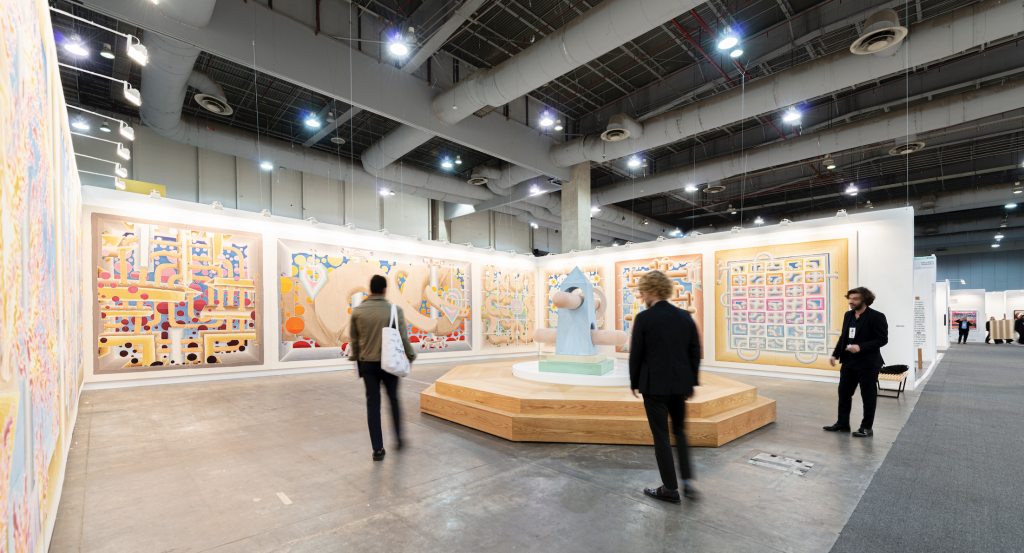
Courtesy: Zhivago Duncan
Photographer: Víctor Mendoza
How I feel is not relevant… Artists are agents with absolute freedom of thought. We are magicians, neutral to the dream of civilization. We isolate it, re-appropriate and manipulate it creating a alternative possibilities, worlds, situations, concepts etc…
You use a really antique technique for your paintings. Can you explain me what is batik?
Batik is an ancient way to dye imagery into fabric. It has a very unique quality. On, canvas it has almost a velvety texture.

Batik on canvas
Courtesy: Zhivago Duncan
Photographer: Víctor Mendoza
Why did you start to name your wax color jars?
For me, it’s a simple way to remember the colors that I mix. I name the colors the first image that comes to mind when I see the color.
When and why did this medium become your signature aesthetic language?
It was my signature medium before I even knew. It almost like it was waiting for me for twenty years.
How did you find your inner voice as an artist?
I yelled at the top of a Volcano when I was seven years old when we lived in Hawaii and in the gust of wind that followed my yell, a voice in the air whispered something into my ear.
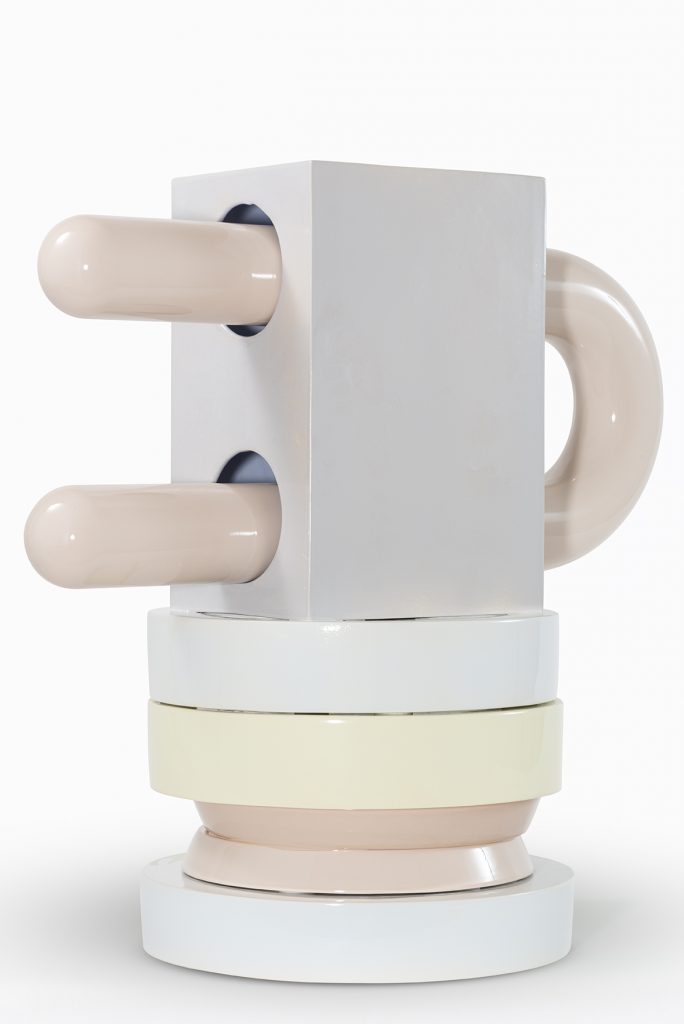
Were you inspired by the character of the classical movie Dr. Zhivago to artistically name yourself after?
I did not name myself after the movie. My mother was reading the novel when she was pregnant with me and for lack of better name she and my father decided to call me Zhivago. I mean who changes their name to Zhivago?!
What is the concept behind “When our Pineal Glands were Big”?
The Story of creation and understanding where we came from.
How does your evolutionary inner process relate to your work?
My work is a visual feed based on the information I take in my process. It kind of happens on its own.
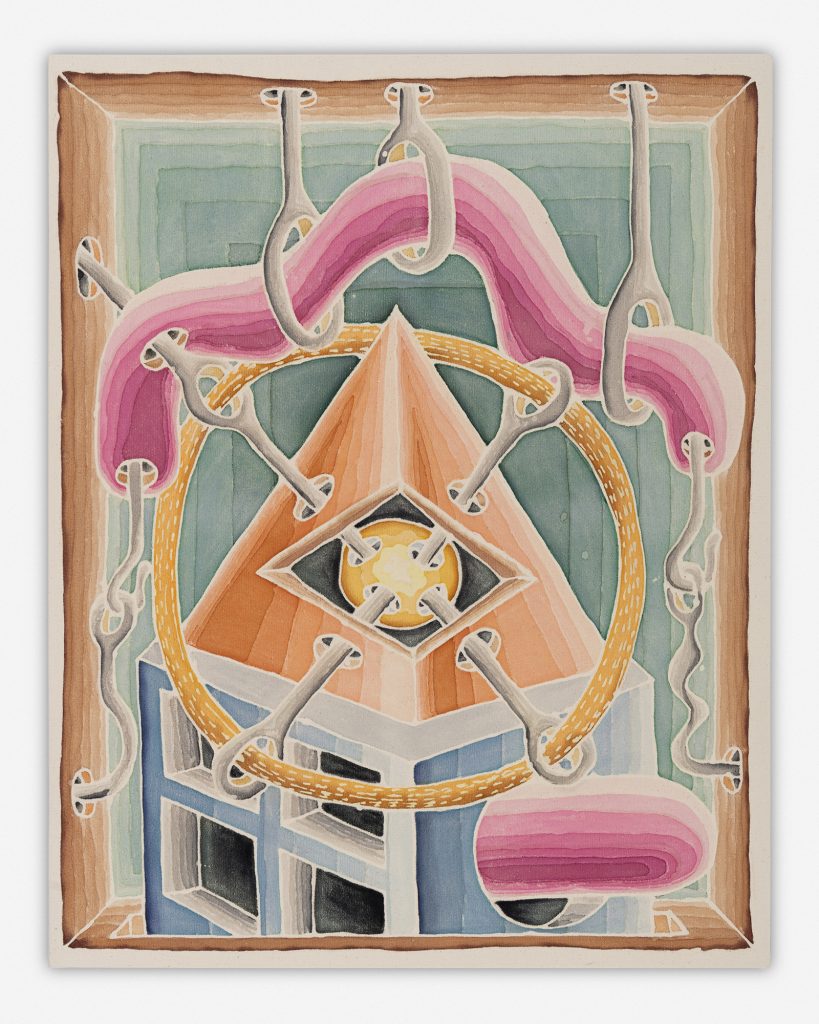
Batik on canvas
Courtesy: Zhivago Duncan
Photographer: Víctor Mendoza
What kind of transformation did you have to go through in your spiritual path to create this project?
It was not a spiritual transformation… Its more like sticking to your spiritual guns. We all have the artillery as children, its about nurturing and keeping that essence as you grow up and are more and more exposed to the rigid walls of adult society.
Why did you decided to title this project like that?
Once upon a time we had massive pineal glands and we were incredibly conscious beings, it’s part of the story of us.
When did you start to work on this on going project?
Two years ago.
Does this mean there is more to come?
100%
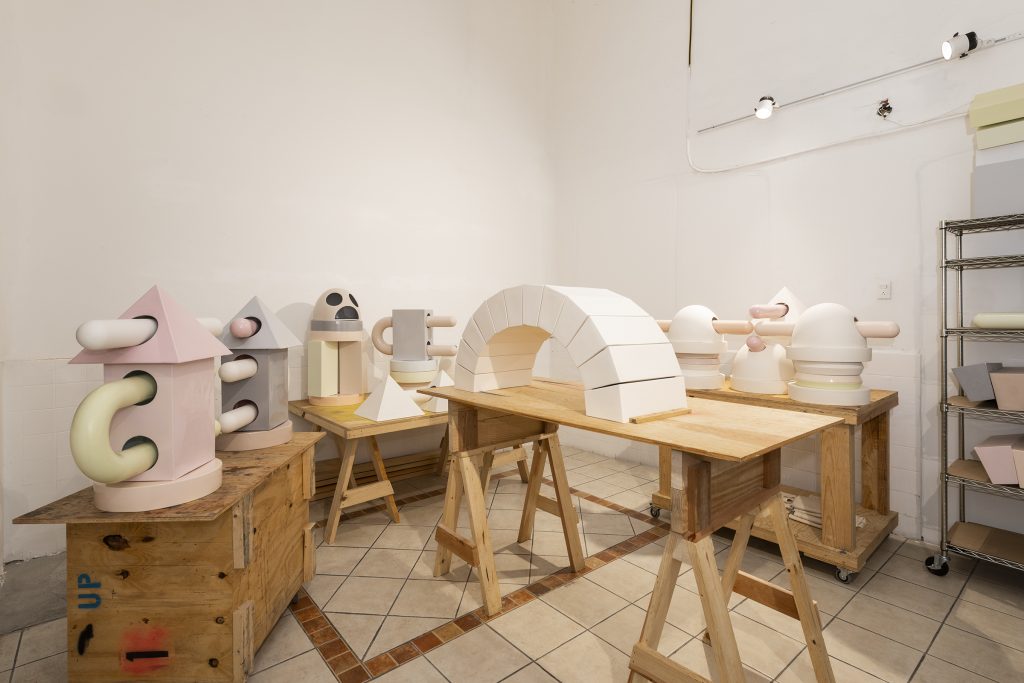
The series tells a unique story about creation drawn from imaginary from ancient texts. Which were the references you took to connect and build this visual narrative?
Basically the four pillars of research in my work are:
- The ancient myths of creation
- Psychotropic substances and neuroscience.
- Geological findings that are disregarded by geological societies.
- Myths and unanswered questions.
After doing this research. What do you think is the purpose of myth in our society?
Myth has no purpose. Myth is just our way of coming to term with things that we cannot explain with reason.
Your work is a representation of connectivity, which gives birth to a line of mythological human structure crossing over to stories of gods and nature of a once harmonious world. What happens with this advanced way of communication between mankind and nature?
Our Pineal glands shrunk.
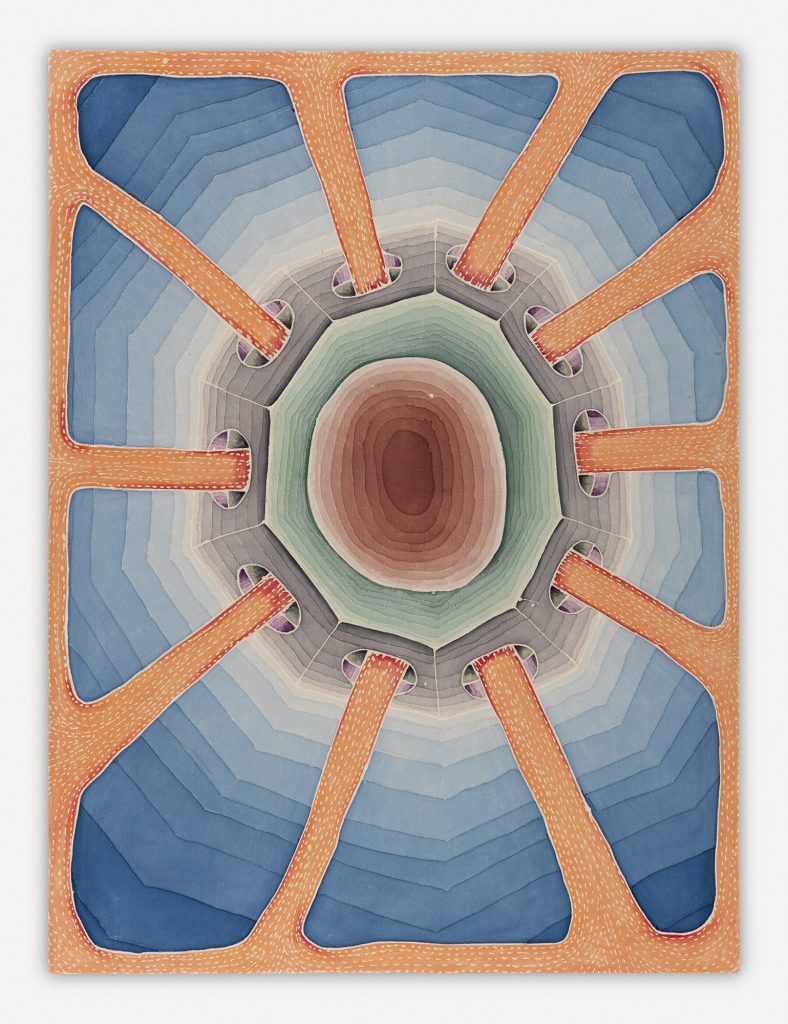
Batik on canvas
Courtesy: Zhivago Duncan
Photographer: Víctor Mendoza
The large-scale paintings and sculptures create an immersive experience the viewer won’t be able to forget. Does entering into this metaphysical surreal dream is like being in your mind?
I guess so. I am not sure how being in my mind is different to anything as I am always in my mind.
Are you going to continue working on this series or are you planning to do something else?
This is just the beginning.
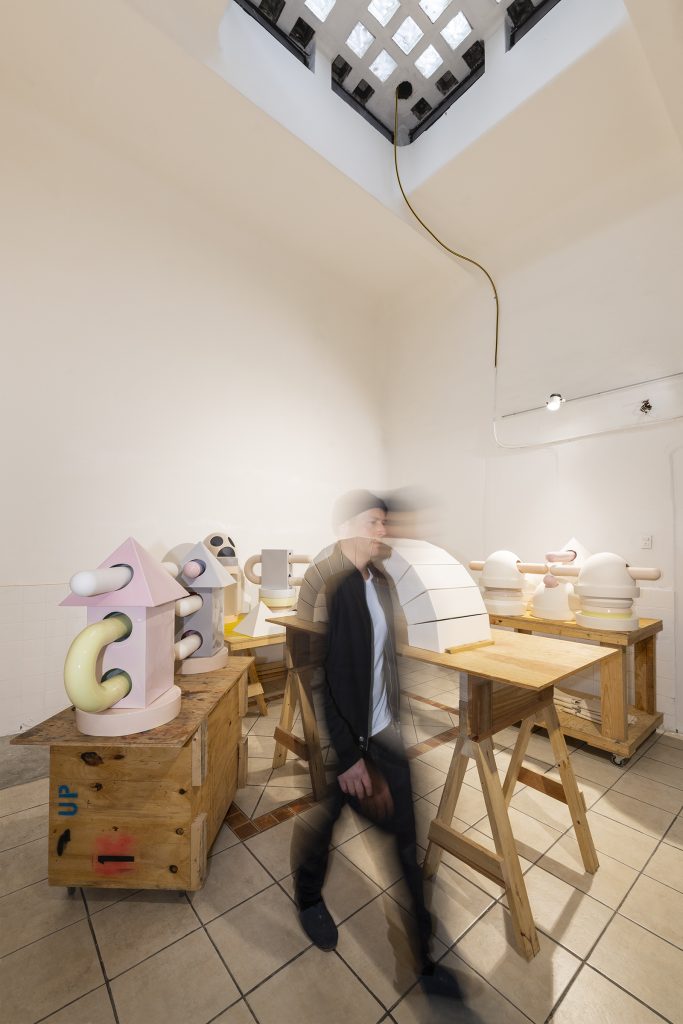
Courtesy: Zhivago Duncan
Photographer: Amanda Holmes
P. www. zhivagoduncan.com
@zhivagoduncan
